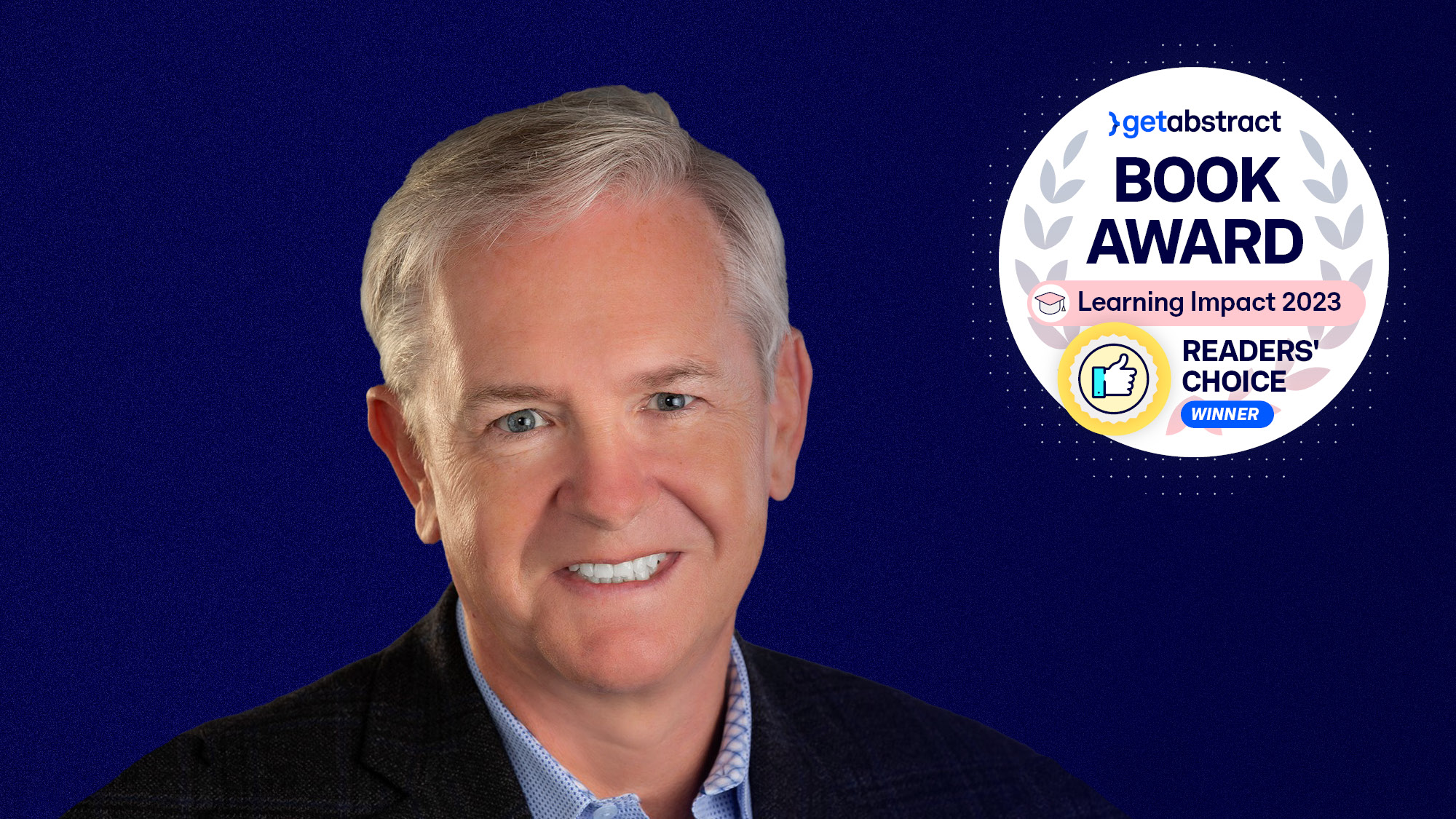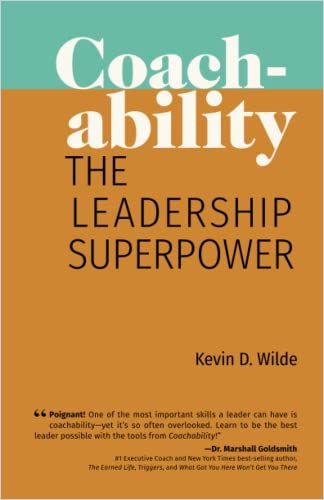“Both Low Confidence and Excessive Confidence Hinder Coachability.”

Kevin, you’ve been a leading leadership developer for decades, and with Coachability, you’ve published a new standard work for the field. What has changed in leadership training over the last 20 years, and how do HR and L&D appropriately respond to those changes regarding future leadership capability?
Kevin Wilde: I’ve identified three essential aspects of the current era in my teaching and research. Firstly, there is a significant need for continuous learning instead of episodic learning. In the past, learning was compartmentalized; now, its integration with our work has become crucial for success. Secondly, advancements in technology have made learning more accessible. We have abundant resources but struggle with limited time for educational activities. In other words: we are both resource-rich and time-starved for learning – especially in leadership development. Finally, we are in an era where individuals are responsible for curating their learning portfolios. This extends beyond skills to encompass experiences, passions, and interests. Owning and continuously updating this portfolio has become vital. While I don’t have a clever title for this era, these three elements are crucial. We must navigate these challenges to thrive in the current leadership landscape.
Your book offers help in all three cases by developing the “leadership superpower” coachability – the ability to seek and respond to feedback to improve. But it also highlights a concerning trend: Despite recognizing the overwhelming evidence of problems, leaders become more resistant to learning and feedback the longer their careers go. Why?
It’s a prevalent issue, and my research and others’ studies indicate that age and tenure hinder leaders’ curiosity, openness to learning, and willingness to accept feedback for improvement. I’ve observed a few faulty assumptions that contribute to this resistance. One is the “false finish line” assumption, where leaders believe they have arrived and no longer need to seek improvement or input actively. This assumption leads to a lack of awareness about areas for growth. Another common assumption is what I call the “superhuman stance.” Some leaders hesitate to ask for feedback because they feel the need to demonstrate their exceptional abilities as leaders.

They fear that seeking feedback might be perceived as a weakness?
Yes. Or that asking for it results in doubts about their competence. Individual personality and environmental factors can influence this reluctance to learn and listen: Different work environments can foster a culture of learning and support or create a toxic and competitive atmosphere, affecting coachability. I’ll mention one more faulty assumption that I call “the empty gym.” It’s akin to the muscle soreness experienced after a long hiatus from exercise. Similarly, leaders who are not accustomed to exercising their curiosity and receptiveness to input gradually lose these essential traits. When they attempt to exercise them again, it feels uncomfortable and unpleasant. These factors, along with others, contribute to the decline in coachability.
Alex Osterwalder, the Swiss business strategist, admitted experiencing similar symptoms as a company leader until he had a coach who held up a mirror for him. He said that many leaders refrain from seeking coaching because they believe they don’t need it. So, where can these leaders find incentives to question themselves and seek assistance?
As the chief talent officer at General Mills, I noticed a recurring pattern. Some individuals who were once considered high-potential and on the promotion track suddenly faced derailment. This prompted me to conduct derailment studies and delve deeper into the issue. Through extensive research and interviews, I found an intriguing pattern in the personnel files of derailing leaders. The last leadership survey or 360° assessment they received before derailing showed a significant decline in their scores on a particular question. That question proved to be a strong predictor of impending problems. Do you know what that question was?
Tell me.
“Does this leader seek and respond to feedback?” So the derailed leader fell into the trap of blindspots due to not seeking or listening to feedback, much like the leader Alex Osterwalder mentioned. On the other hand, my later research found highly coachable leaders who avoided this trap. Three things stood out.
Firstly, they sought truth-tellers with three attributes: competence, contextual understanding, and genuine care.
These truth tellers help leaders avoid blind spots, have candid and sometimes difficult conversations, and help leaders see things they may have missed. Secondly, coachable leaders develop regular learning habits that contribute to their growth. Lastly, leaders should strive for continuous improvement by seeking counsel, diverse perspectives and remaining open to other feedback. To emphasize the importance of surrounding yourself with truth-tellers, I usually ask my class to identify their trusted advisors and question when they last engaged in meaningful conversations that challenged assumptions.
That does not mean dismissing the importance of positive feedback, right? We all need encouragement and recognition for our accomplishments.
Yes, conversations on what you are doing well have their place, providing support and positive reinforcement. Even senior leaders appreciate recognition for a job well done. But it’s essential to strike a balance. I recently conducted a webinar where I encouraged participants to choose a topic they want to improve on and engage in discussions about it. Leaders should be proactive in determining the issues they care about learning, the people they can turn to, and the appropriate ways to seek feedback.
You’ve already touched on it, but could you briefly outline the mindset required for coachability throughout one’s career?
Of course. Our study of 300 leaders found that they view themselves as works in progress rather than finished products. While they have accomplishments and people rely on them, they maintain a mindset of continuous growth. One of the most fascinating findings from our research was the correlation between confidence and coachability. We discovered a curve where both low confidence and excessive confidence hinder coachability.
The sweet spot of coachability lies in the learning zone, which exists between the extremes of low and excessive confidence.
The mindset of highly coachable leaders centers around operating in that learning zone, which complements the busy-but-not-learning zone and avoids the overconfident, I-don’t-dare zone. Leaders who integrate the learning zone into their operating style, habits, and values are more coachable and serve as better role models for others as well.
While asking for and receiving feedback is valuable, knowing how to utilize it effectively is crucial. Is there a structured approach to applying these inputs based on individual needs?
First, although “feedback” is commonly used, it often carries negative connotations, suggesting criticism and undermining one’s self-worth. Instead, I prefer the term “taking a note.” This perspective shift reframes feedback as an observation or a tip rather than something critical. Let me explain: I had a conversation with a professional actor about coachability, and he referred to feedback as “taking a note.” He explained that as an actor, after a rehearsal, the director would provide feedback to each actor, which they called a note. Incorporating that feedback into their performance was referred to as taking a note. Adopting this approach, I recommend leaders reframe any feedback coming their way as just “taking a note” or “getting a tip to consider.”
What does such a habit look like in concrete terms?
For example, when my spouse gives me feedback, I playfully refer to it as my “Tip of the Day.” This reframing neutralizes tension and allows me to better understand and utilize the feedback. Another tip is to approach feedback with a neutral mindset and actively listen. That’s a positive way to react to input from others. But coachable leaders also proactively seek “Notes” and “Tips.” I am working on an article discussing the concept of having “pocket questions” — prepared questions that can be pulled out at a moment’s notice. For instance, at the end of a webinar, I often ask the conference organizers two questions: What did I do well that I should continue doing, and what could I do differently to improve? These are my pocket questions, enabling me to seek feedback consistently. Rather than rushing off to the next task, incorporating these questions into standard practices such as after-action reviews or end-of-meeting discussions can foster a genuine desire for learning and improvement.
So, what did you get back so far?
One example is when I learned through this approach that I should incorporate pauses, summaries, and clear messaging in my webinars and podcasts. (Laughs.) It sounds obvious, but I would never have gained this insight without asking those questions. I was also told I was occasionally making a distracting noise by hitting the microphone. I didn’t hear the noise! That’s a great example of learning about a blind spot.
Leaders should craft a pocket question and use it often to learn.
We often encounter leaders lacking direction amidst disruptive shifts, such as those currently caused by advancements in AI. In such situations, teams may feel uncertain, looking to their leader for guidance. However, leaders themselves may not have all the answers. What can coachable leaders do when they are expected to provide confidence to their team but don’t always know the way forward?
Leaders must recognize that seeking support from their managers and employees is normal and should not be seen as a sign of weakness. Assuming that bosses always have all the answers in this rapidly changing era is a faulty assumption. Coachable leaders employ techniques such as reflection and pausing to gain clarity: They take the time to focus, assess the situation and explore different perspectives.
Can you give an example here?
For example, a coachable leader would approach it with curiosity if there is a new development in generative AI and large language models. They acknowledge what they know and don’t and chart a path to acquire the necessary knowledge updates. While they may not have all the answers, they offer a perspective, openly sharing what they know and don’t know. Moreover, they provide a plan for navigating the challenge at hand or communicating what is currently known. It is comparable to being on one side of a raging river, where crossing successfully is imperative, but the stepping stones to get across aren’t all visible as you start.
Some may stumble or hesitate, but coachable leaders understand that they may need to take a few steps, assess the situation, gather feedback, and adapt their approach accordingly.
They have the confidence to start moving across by stepping on the stones they see and believe more will come into view after they start. They have the confidence to begin the journey, recalling past experiences of handling disruptions and identifying what remains the same and what requires continuous learning. It’s a journey of constant growth and adaptability.
These days, we receive more and more inquiries from our customers regarding agile career paths – and many struggle to offer those to senior personnel. After reviewing your book and its summary, this could be a potential opportunity to identify coachable leaders and leverage their expertise by making them mentors for younger employees to foster in-house learning. What are your thoughts on this perspective?
That’s a fantastic idea. Imagine the positive impact on your organizational culture by unleashing competent and respected senior individuals who are also feedback and coaching magnets. They would share their wisdom while also demonstrating the necessary willingness to learn. This would be genuinely infectious within the culture. The idea reminds me of my experience at General Mills: We conducted annual career discussions with managers, providing tools, inspiration, and various resources. However, we noticed that the participation rate was not as high as we desired. Fortunately, I had a marketing manager named Ricardo join my team. He suggested conducting market research to better understand employee behavior and engagement with career development discussions. Ricardo discovered that we needed to segment the audience into three groups.
They were?
The first group was early-career employees who were highly engaged in the career development discussion, recognizing its importance for their advancement. The second group consisted of mid-career individuals who had heard “similar messages before.” For them, it was a matter of reigniting the connection between development and their career trajectory. However, the third group, which I believe you are referring to, presented a unique challenge: These were individuals approaching the later stage of their careers or those who had settled into their roles for an extended period. The perspectives of the first two groups did not resonate with them. We found two unique growth motivators in interviewing these seasoned leaders: “mastery” and “legacy.”
Do you mean that a new mentorship career path for coachable leaders, adding more bars to a senior professional’s ladder, would have to combine both?
Indeed. Mastery referred to identifying an area where the respective leaders were already proficient but had the potential to become exceptional, motivating them to strive for excellence. The other motivator, legacy, tapped into the idea that they would eventually leave their current position: We encouraged these senior leaders to consider the unfinished business they wanted to address and how personal growth could help them achieve their desired legacy.
I would suggest that HR practitioners approach today’s issues around finding new and agile ways for senior leaders to grow by adopting a coachable perspective: Instead of simply providing more tools and resources, it is crucial to ask individuals in this stage of their career to reflect on their development.
This approach might likely generate breakthroughs regarding engagement and conversation scores.
Any final thoughts?
Yes. When this interview is over, I have two questions for you!
About the Author
Kevin D. Wilde is an executive leadership fellow at the University of Minnesota, where he teaches and researches leadership, coaching and talent development. His career has included 17 years serving as General Mills’ senior talent development executive, preceded by 17 years at General Electric, where he participated in its renowned corporate leadership training center.









